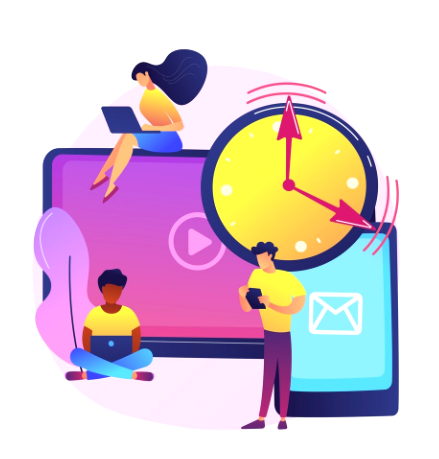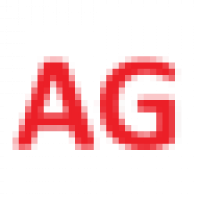How to Choose the Right Time and Attendance Software in Singapore for Your Business?

Strong 8k brings an ultra-HD IPTV experience to your living room and your pocket.
Workforce management in Singapore’s fast-paced economy demands clarity and control. As businesses grow, keeping track of working hours, break times, and shift changes becomes complex. Manual methods fail. Errors creep in. Trust erodes. That’s where a solid time and attendance software solution steps in.
Whether you manage a retail outlet, a manufacturing site, or a professional firm, choosing the right system impacts more than payroll. It shapes company culture, improves accountability, and streamlines human resources. This guide walks you through key features, practical comparisons, and common mistakes to avoid when selecting time and attendance tools in Singapore.
What Is Time and Attendance Software?
Time and attendance software records when employees start and end work. It often includes features like overtime tracking, shift scheduling, break logging, and reporting tools. Many systems now include biometric scanning, mobile login, or facial recognition to prevent misuse and improve accuracy.
In Singapore, where businesses balance compliance with flexibility, such systems help firms stay efficient while reducing disputes and missed hours. They play a role in helping managers enforce proper work practices while protecting employee rights.
Why Your Business Needs a Time and Attendance System?
Here’s what you gain:
- Accuracy: Eliminate guesswork and handwritten logs.
- Productivity: Focus HR efforts on strategy, not manual checks.
- Compliance: Track hours clearly to meet labour rules.
- Transparency: Build trust by tracking fairly and visibly.
- Efficiency: Reduce time spent correcting errors or chasing down timesheets.
For businesses in sectors with high staff turnover, automation becomes even more crucial. Time and attendance systems offer consistency that new hires and contractors can understand quickly.
Key Features to Consider
Not all tools work the same way. Look for these features when choosing a system:
1. Real-Time Clock-In Options
Your software must track hours live. Whether through an app, swipe card, or biometric scan, it should show who is present and when. This real-time visibility improves planning and reduces absenteeism.
2. Shift Scheduling Tools
This lets managers plan rosters with ease. Good systems also let staff view their shifts, request swaps, or book leave. Clear scheduling limits confusion and improves punctuality across departments.
3. Integration with Payroll
Your attendance system should talk to your payroll system. This avoids repeated entries and reduces mistakes. It also helps ensure that overtime and part-time hours are paid accurately.
4. Mobile Access
Mobile-ready systems allow staff to clock in while on the move. This suits industries like delivery, fieldwork, or off-site service teams. It also allows remote workers to stay connected.
5. Customisable Rules
You should be able to set rules for:
- Break lengths
- Overtime eligibility
- Public holiday handling
- Time rounding
This ensures the system follows your specific workplace policy, which may differ by department or job type.
6. Audit Trail Logs
The system should track edits, overrides, and approvals. This protects both staff and employers in disputes. A transparent log keeps accountability at the centre of all-time records.
7. Reporting Tools
Choose software that offers export-ready reports.
Look for:
- Daily summaries
- Absentee charts
- Overtime records
- Late arrivals
These insights assist in planning, forecasting overtime needs, and identifying patterns requiring attention.
8. Multiple Location Tracking
If your firm operates across outlets, your tool must handle location-specific data in one place. This reduces manual tracking and supports consistency across branches.
9. Cloud or On-Premise Options
Some firms prefer on-site hosting for security. Others choose cloud tools for easy updates. Pick based on your IT setup, data sensitivity, and staff location flexibility.
10. Role-Based Access
Supervisors should see their team only. HR can access everyone. Choose tools that manage viewing rights by role. This keeps sensitive data protected and improves team focus.
How to Compare Time and Attendance Systems?
1. Map Your Needs
Ask:
- Do you have shift workers?
- How many sites do you manage?
- Do staff work remotely?
- What’s your payroll process?
These answers guide what features you need. You may not need biometric access today, but want to scale toward that in future.
2. Review Data Privacy Compliance
Check if the tool meets PDPA (Personal Data Protection Act) rules. Attendance data includes personal identifiers and must be stored responsibly. Ask how long data is retained and where the servers are located.
3. Trial the Interface
Choose a system your staff will understand. A confusing tool won’t work, even if the features are strong. Always demo it first, and get feedback from different users before rolling it out company-wide.
4. Check Update History
A reliable vendor updates their platform often. If the software hasn’t changed in years, it may not support future needs. Up-to-date platforms adapt faster to new compliance standards.
Integration with Other Tools
Strong systems connect with:
Strong systems connect with:
- Payroll software
- Leave management tools
- HR dashboards
- Access control hardware
This reduces workload and speeds up reporting. It also ensures time tracking reflects overall attendance, not just clock-in records.
Common Mistakes to Avoid
Mistake 1: Picking Based on Price Alone
Cheap tools often lack critical features or support. They also may charge extra later for “premium” options you thought were included.
Mistake 2: Ignoring User Feedback
Always include HR and a few staff in the testing stage. Their insights highlight issues before rollout. Their comfort with the system affects success long term.
Mistake 3: Skipping Training
Even the best tool fails if people don’t know how to use it. Plan for onboarding and assign a point person for questions.
Special Considerations for SMEs in Singapore
Smaller firms must balance cost with function. Look for tools that offer:
- Scalable pricing
- Modular add-ons
- Local support (for faster help)
Also, consider tools that meet MOM (Ministry of Manpower) standards for work hour tracking. A compliant tool supports audit readiness and smooth government interactions.
Comparison of Time Tracking Approaches
Comparison of Time Tracking Approaches
- Approach
- Pros
- Cons
- Manual (paper)
- Cheap, no tech needed
- Errors, no audit trail
- Card scanner
- Fast, easy to install
- Easy to misuse (buddy punch)
- Biometric
- Secure, accurate
- Higher setup cost
- Mobile app
- Good for remote workers
- Needs data and stable internet
This table outlines the pros and cons of common time-tracking methods for businesses.
Time and Attendance Software and Team Culture
Good systems help build workplace fairness. Staff trust the records. Managers gain insight into team behaviour. This improves planning and morale.
The software becomes more than a tracking tool. It becomes a bridge between leadership and teams. When time data is respected, people value their schedules—and each other's.
FAQ’s
1. Why does my business need time and attendance software?
Time and attendance software helps track employee work hours, manage shifts, and reduce manual errors in payroll. It ensures accountability and improves efficiency, especially in growing businesses.
2. What features should I look for?
Look for core features such as clock-in/out tracking, shift scheduling, leave management, biometric integration, real-time reports, and compatibility with local payroll systems.
3. How secure is employee data?
Ensure the software uses encryption, secure login methods, and role-based access. Always ask about local data protection compliance, including adherence to the PDPA in Singapore.
Final Thoughts
In today’s business landscape, tracking time accurately matters. A strong time and attendance software system builds structure, prevents disputes, and saves time. It reduces guesswork and improves accountability.
From retail stores in Orchard to workshops in Tuas, every firm in Singapore benefits from smarter time tools. Pick a system that matches your team’s size, habits, and tech level. Focus on tools that evolve with your business and bring clarity to the workplace.
Choosing well today means fewer problems tomorrow—and a workplace where time is respected and well spent.
Note: IndiBlogHub features both user-submitted and editorial content. We do not verify third-party contributions. Read our Disclaimer and Privacy Policyfor details.


